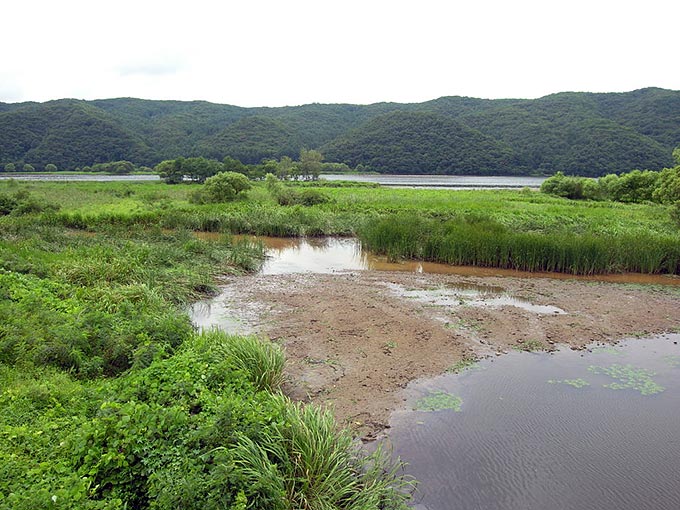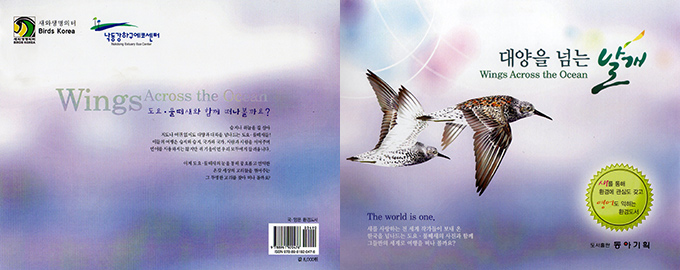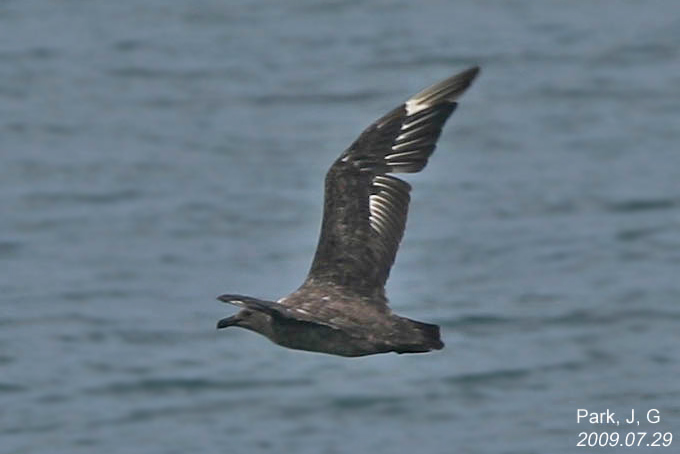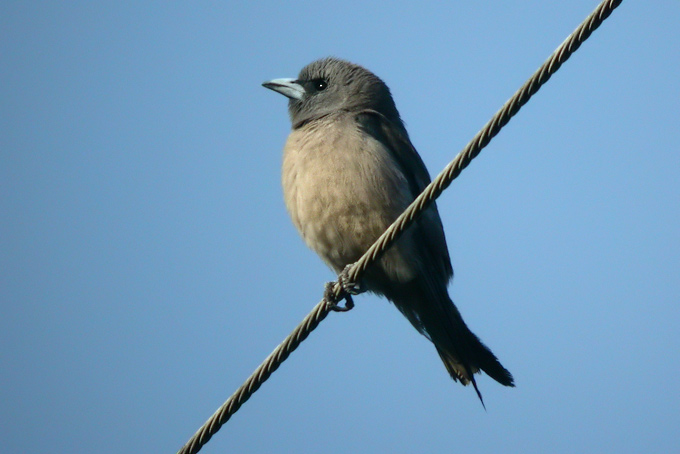This Update covers June 1st to July 31st 2009. It is in three parts:
Over the past decade there has been a major and positive growth in awareness about the environment, both here in Korea and around many parts of the world. However, this is yet to be matched in many cases by a real shift in development policy away from the unsustainable to the genuinely sustainable. For example, the United Nation’s Millennium Development Goals contain an urgent call to reduce the rate of biodiversity loss by 2010, with main areas of concern including:
Marine areas and land conservation need greater attention
The number of species threatened with extinction is rising rapidly
Fish stocks require improved fisheries management to reduce depletion
However, the current extinction rate of plant and animal species is estimated as being 1,000 times faster now than it was in pre-human times - and this will increase to 10,000 times faster by 2050, according to the Millennium Ecosystem Assessment produced in 2005 (Ecosystems and Human Well-being: Biodiversity Synthesis. World Resources Institute, Washington DC (see: http://www.millenniumassessment.org/en/Article.aspx?id=61). Declines in avian biodiversity are apparent across continents (e.g. see Conservation News: http://www.birdskorea.org/News/Members_updates/BK-MU-2009-05.shtml), and the Oceans Past Census (http://www.coml.org/embargo/oceanspast2009) also reveals massive declines in marine life around the world, with 85 to 90 per cent fewer fish and marine mammals now than there once were, this according to Professor Paul Holm (The Globe and Mail, May 25th, 2009). Further, the United Nations Food and Agriculture Organisation estimate that about 75% of oceanic fisheries are already fished at or beyond capacity (Meadows, Randers and Meadows. 2004. Limits to Growth - 30 year update (see: http://www.mnforsustain.org/...30_year_update_2004.htm).
It is clear that this loss of biodiversity and fisheries, and the loss of key habitats (such as tidal-flats and natural rivers), is not only “bad” for the species in decline: it is “bad” too for people that depend on them for life and livelihood.
It is therefore especially surprising that the ongoing reclamation of 30,000 ha of tidal-flats and 10,000 ha of sea-shallows at Saemangeum is now being promoted as “Green, Global, Golden” (Public Infomercial on Saemangeum, July 2009); that the proposed continued reclamation of Song Do tidal-flat, once the centre of a local shell-fishing industry, is being portrayed as somehow environmentally-friendly; and that the construction of yet more dams and the dredging of many hundreds of kilometres of river (as part of the “Four Major Rivers Restoration”) is somehow “Green Growth”.
In the case of Saemangeum, this one reclamation project alone has caused a 20% decline in the global population of the Great Knot Calidris tenuirostris, and has helped push the now Critically Endangered Spoon-billed Sandpiper Eurynorhynchus pygmeus closer toward extinction. The Song Do reclamations for the Incheon Free Economic Zone have also already led to major habitat loss for bird species including the globally Vulnerable Chinese Egret Egretta eulophotes, Saunders’s Gull Chroicocephalus saundersi and Relict Gull Ichthyaetus relictus, and any future reclamation will further imperil one of the nation’s most important remaining shorebird sites, also used by the Endangered Black-faced Spoonbill Platalea minor which breeds there, a species further threatened by imminent habitat loss in Hakata Bay, Japan (for a petition on this site, please go to: http://www.thepetitionsite.com/1/save-the-habitat-for-the-black-faced-spoonbills-and-other-migratory-waterbirds). Further, the dredging and canalization of many hundreds of km of river will clearly cause major habitat loss for river-dependent species, such as the Long-billed Plover Charadrius placidus, the Mandarin Duck Aix galericulata and the globally Endangered Scaly-sided Merganser Mergus squamatus.
In the case of the Four Rivers, according to the report submitted by the Korean Federation for Environmental Movement to the United Nations Environmental Program on July 31st: “Most of the total budget of 22.2 trillion Korean Won (USD 17.8 billion) [for this project] will be spent by 2012 to build more than 16 new dams on the mainstreams of the four rivers and five new dams on their tributaries, to raise 87 existing irrigation dams, to strengthen 377 km of river bank and to dredge 570 million cubic meters of sand and gravel from 691 km long sections of the rivers to keep the water 4-6m deep of the four rivers and to strengthen 243 km of river bank, and to raise 9 existing irrigation dams in other tributaries and river basins.” (KFEM, July 31st 2009).

The Kyeongancheon river flowing into the Han River near Paldang,
Photo © John Roberts
For more on this potentially-devastating project in English, and to sign the KFEM-sponsored petition, please go to: http://www.thepetitionsite.com/1/save-4-rivers-in-Korea
Purely on environmental grounds, it is easy to see that reclamation at Saemangeum and Song Do and the Four Rivers development do not fit with the existing definition and principles of Sustainable Development as provided by the United Nations, nor does such construction fit with existing guidance from the Ramsar Convention. Such projects are not “green”. Based on some of the promotional hype it also seems that they might economically only be possible if they can be paid for by overseas (“Global, Golden”?) investment.
It is therefore very encouraging that the US-based SAVE International, working with domestic organizations in the Republic of Korea, has both publicly protested the proposed Song Do reclamation (go to: http://www.birdskorea.or.kr/Habitats/Wetlands/Songdo/BK-HA-Songdo-SAVE-2009.shtml) and also has identified several potential US-based investors, with the intent to inform them of the international importance of the wetland, and of the obligations all of us have, as world citizens, to achieve genuinely Sustainable Development (see: https://www.earthislandprojects.org/project/campaignPage.cfm...&CFTOKEN=54976527).
It is also positive that on July 21st, the Ramsar Regional Center - East Asia was opened in Changwon city (http://www.ramsar.org/wn/w.n.korea_rrc_opening.pdf). The shared hope of many is that this Center will help to play an important role in informing and improving domestic wetland conservation policy, better enabling the Republic of Korea to take a rightful role as a regional leader in conservation, with NGOs, academics and government working together openly and in line both with domestic laws and with obligations held under international agreements and conventions.
Research
Towards this vision of sustainable development and collaboration, we have continued our field-research on seabirds at sea and island-nesting species though June and July, and have (finally!) also updated and revised our Birds Korea Checklist (Go to: http://www.birdskorea.org/Birds/Checklist/BK-CL-Checklist-info-2009.shtml), an essential step in the continuing development of our records database, itself invaluable in identifying key species and determining population trends.
Planning and Design
While we still are seeking ways to improve the conservation status of the Mokpo Namhang Urban Wetland, further Planning and Design-related work also now includes our participation in the committee for the development of the Citizen’s park in Busan (see e.g.: http://news20.busan.com/...newsId=20090716000083), with the first meeting held in Mid-July. We believe that the process leading towards the park creation, as well as the park construction itself, will offer important opportunities to highlight the principles of ecologically-focused habitat creation and management.
Awareness-raising and Education
Awareness-raising work continues through meetings and through our websites. Data reveal that an average 435 visitors visited the English-language website per day between January 1st and July 31st 2009, with over 90,000 visitors during the year so far, and over 260,000 page views. While similar data are not available at present for the Korean-language website, the Forum pages also reveal a steadily increasing level of website traffic. In combination with regular media coverage (usually of one or often more citations/quotations in domestic or international media monthly for the past three years), it is clear that we continue to be heard.
Work also continued throughout June and July on final revisions to our small but beautiful book on shorebirds, “Wings Across the Ocean” (Park, Moores, Kim 2009), which will be published in late August, and also on our images gallery.

Coordinated and arranged by Mr. Andreas Kim in Mokpo, the Birds Korea Images Gallery is a massive project, now including some 1900 images of over 460 bird species and close to 500 subspecies taken in Korea, all being arranged with a bilingual note on conservation status, age/sex and subspecies! With so many images to check and annotate (all kindly provided by our members and website visitors), we would welcome help on from those who love identification challenges … Please contact us! Soon to open, the Gallery will be a wonderful resource - helping people to identify and learn a little about the wonderful birdlife of Korea.
Records have been collated by Tim Edelsten et al. of observations by Birds Koreans and from records posted on other leading birding websites, mostly especially the websites of the National Parks Migratory Bird Research Centre, KWBS and BirdDB. Nomenclature, order and status codes follow the revised Birds Korea Checklist (Moores, Park & Kim, 2009), which follows Gill et al. (2009).
Whooper Swan Cygnus cygnus W3 SV2
One photographed at Seosan on June 6th by Kim Shin-Hwan and again on June 24th by Kwan Kyoung-Sook is an exceptional mid-summer record.
Oriental Stork Ciconia boyciana EN, W5 SV2
One photographed on June 5th at Seosan by Kwan Kyoung-Sook is apparently only the second recent record of over-summering on the mainland.
Red-footed Booby Sula sula V2
An immature east of Heuksan Island on July 25th seen (but not photographed) by Nial Moores is only the second national record of this species, after the first was collected in 1986.
Cinereous Vulture Aegypius monachus NT, W3 RV1
Three seen at Yangsu reservoir, Jeju Island, on June 8th by Matthew Poll are presumably the same individuals that have apparently over-summered on Jeju Island for several years.
Pied Avocet Recurvirostra avosetta V1
Two photographed at Seosan on June 29th by Lee Hae-Sun are the first June records known to Birds Korea.
Black-tailed Godwit Limosa limosa melanuroides NT, P2 WV2
At least 75 photographed by Lee Hae-Sun on June 29th at Seosan is an exceptional record for June.
Gull-billed Tern Gelochelidon nilotica V2
One seen at sea between Incheon Port and Socheong Island on June 23rd by Robin Newlin is only the 9th or 10th national record.
South Polar Skua Stercorarius maccormicki V1
Between one and three were at sea between Heuksan and Bigeum Islands in late July. The first one to be photographed adequately in Korean waters was one photographed by Park Jong-Gil on July 29th.

Eurasian Collared Dove Streptopelia decaocto V1
One seen in Gangwon Province on June 26th by Robin Newlin is apparently the ninth record for the Republic of Korea since 1961 and perhaps the first in summer.
Blue-winged Pitta Pitta moluccensis V2
Korea’s first record, found and photographed on Mara Island (Jeju) on May 30th apparently remained there until at least June 7th (via Matthew Poll). Of further note, Geoff Carey mailed from Hong Kong to inform us that 2009 appeared to be an exceptional spring for “overshooting” Blue-winged Pitta, with singles also found and photographed in Hong Kong, Shenzen Province, and Taiwan.
Ashy Woodswallow Artamus fuscus V2
One found and photographed on Socheong Island by Nial Moores on June 23rd is the first record for Korea of this presumed largely sedentary species. It was still present on June 24th, when also seen by Robin Newlin and Kim Shin-Hwan, but could not be found in July. Of interest, Geoff Carey mailed from Hong Kong to inform us that the first record of this species for Guangdong Province was found in late April this year, while according to Dave Bakewell in Malaysia, the first national record there was in mid-February 2008.

Light-vented Bulbul Pycnonotus sinensis S5 RV2
Between two and four juveniles seen on Gageo Island by Nial Moores on July 27th represents only the third known breeding site for this species nationally, since breeding was first noted on Socheong Island in 2004.
References
- Gill, F., Wright, M. & Donsker, D. (2009). IOC World Bird Names (version 2.1). IOC World Bird Names (version 2.1), Accessed in late May 2009.
Finally, a gentle reminder to all of our members (past and present) living in Korea. Birds Korea depends entirely on the support of our members and volunteers. Donations and domestic membership fees are vital to us! Please renew your membership (annual membership fee is only 30,000 Korean won; and life-time membership only 150,000 Korean won at this time), and help us to help the birds!
This update was prepared through the joint efforts of Nial Moores, Kim Sona, Andreas Kim, Park Meena, Park Ju-Seong, and Tim Edelsten, with contributions by many members.
Birds Korea, August 15th 2009.



